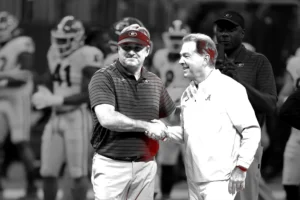
In recent years, a transformative shift has taken place in the landscape of amateur sports with the emergence of Name, Image, and Likeness (NIL) rights for student-athletes. NIL refers to the ability of collegiate athletes to profit from their own name, image, and likeness without jeopardizing their eligibility to compete. This revolutionary change marks a departure from the traditional structure of amateur sports and has far-reaching implications for athletes, universities, and the sports industry as a whole.

The concept of NIL collectives has arisen as a means to empower student-athletes to negotiate endorsement deals, brand partnerships, and promotional opportunities. NIL collectives are groups that offer athletes support, guidance, and resources to navigate the complexities of the business world. These collectives help athletes secure fair compensation for their talents and marketability, enabling them to manage their own careers while focusing on academics and sports. In essence, NIL collectives bridge the gap between the athletic and business realms, providing student-athletes with essential life skills and fostering a sense of agency over their own destinies.
The impact of NIL rights on amateur sports has been profound, sparking a paradigm shift in how athletes perceive their value and role within the sports industry. By allowing student-athletes to capitalize on their personal brand, NIL rights have broken down the long-standing narrative of exploitation within collegiate sports. Athletes are no longer just players; they are now entrepreneurs, influencers, and role models with the ability to shape their own futures. This newfound autonomy is inspiring more young talents to pursue both their athletic and entrepreneurial aspirations, ushering in a new era of sports where individuality and business acumen are celebrated alongside athletic achievement.
Furthermore, NIL rights have transformed the relationship between universities and their student-athletes. Universities are now tasked with supporting athletes’ endeavors outside of the field, court, or track. This shift has prompted universities to develop educational programs that empower athletes to make informed decisions about endorsements, contracts, and financial management. By fostering a holistic approach to athlete development, universities are nurturing well-rounded individuals who are equipped to thrive not only in their sports careers but also in their post-athletic endeavors.
The ripple effect of NIL rights is also being felt across the sports industry. Brands and businesses are now presented with a unique opportunity to partner with authentic and engaged athletes, reaching a broader and more passionate audience. This has the potential to reshape the dynamics of sports marketing, as companies recognize the value of aligning with athletes who have genuine connections with their fans. As a result, the traditional power dynamics between athletes and brands are shifting, putting more negotiating power in the hands of athletes and creating a more balanced ecosystem. The introduction of NIL rights and the emergence of NIL collectives represent a monumental change in the landscape of amateur sports.

This evolution is empowering athletes to take control of their own destinies, fostering a sense of entrepreneurship, and reshaping the dynamics of collegiate athletics. With the newfound ability to profit from their name, image, and likeness, student-athletes are not only excelling in their sports but also gaining essential life skills that will serve them well beyond their athletic careers. As we continue to witness the transformational impact of NIL, one thing is clear: amateur sports will never be the same again.
